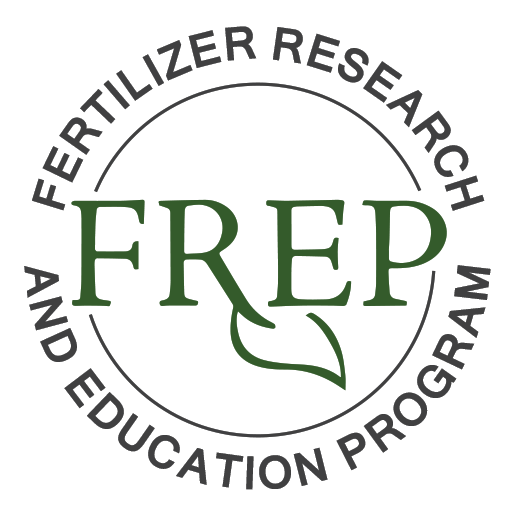| |

|

|
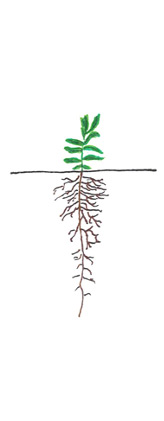
|
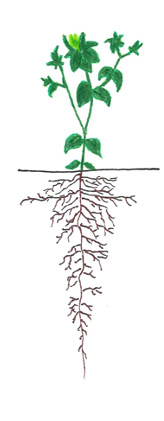
|
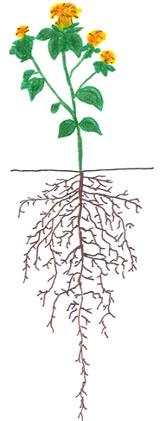
|
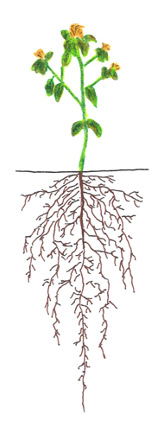
|
| Preplant | Sowing | Stem Elongation | Branching | Flowering | Maturity |
|
Nitrogen (N)
|
Soil Test
|
|
Plant Analysis
|
|
|
Preplant N
|
Starter N
|
Sidedress N
|
|
| |
Foliar N
|
|
|
Nitrogen (N)
Soil Test
Plant Analysis
Preplant N
Starter N
Sidedress N
Foliar N
|
Close
Safflower N Nutrition
In young safflower or with mild deficiencies, N-deficient plants are uniformly light green to pale yellow. In more severe deficiencies 'firing' occurs, as the older leaves become darker yellow to orange, starting from the leaf tips, and finally turn brown and die [N14]. Nitrogen-deficient safflower has fewer heads per plant [N6].
Excess N on dry-farmed safflower can decrease yields by encouraging excessive vegetative growth at the expense of flower and seed formation [N11].
Close
Soil Nitrate Test
Residual soil nitrate and irrigation water nitrate can supply all or part of safflower's N requirement [N1]. Soil tests are especially important for dryland safflower, where excess N can reduce yields. The residual soil nitrate level depends on a number of factors related to soil properties, weather and crop management (see Factors Affecting Soil Nitrate-N). Therefore, the test needs to be carried out every year.
Samples should be taken close to planting. Safflower is one of the deepest-rooted annual crops. For deep, well-drained soils, water and nutrient uptake from depths of 9 feet and below has been measured [N1,N8]. In a study on a deep clay loam soil near Five Points, pre-irrigated safflower took up less than 20% of its N from the top foot of soil [N1]. Sampling to three feet or below will therefore improve the accuracy of a soil nitrate test. Due to the variability of nitrate in the soil, care must be taken to assure that the sample is representative for the field. See Sampling Instructions for more information.
Pounds of potentially available nitrate-N per acre in each foot of soil can be estimated by multiplying parts per million (ppm) of nitrate-N by 3-4. For example, if the top foot of soil contains 10 ppm nitrate-N and the second foot contains 5 ppm, 30-40 and 15-20 lbs nitrate-N/acre are present in the top and second foot of the profile, respectively. See Preplant N for for information on adjusting application rates.
When well water is used for irrigation, a considerable amount of N may be applied with the irrigation water. To convert nitrate-N concentration in the water to lbs N/acre, ppm nitrate-N in the water is multiplied by 0.226 and by the number of acre-inches of water applied. For example, with 10 acre-inches of water containing 10 ppm nitrate-N, 22.6 lbs N are applied per acre.
Close
Plant Analysis N
Soil sampling is more common than tissue sampling for assessing nutrient status of safflower. However, plant sampling can be useful for confirming deficiencies.
To analyze safflower in the pre-bloom stage, only the middle section of the stem is sampled. At the first bud stage, whole recently matured mid-stem leaves are selected. For a representative sample, about 40 stems or leaves should be sampled. Samples should be placed in a clean paper bag and dried at a temperature of 140-160 °F [N2,N15].
Non-uniform fields are best divided into uniform areas which are sampled separately. Atypical areas in a field should be avoided (if small) or sampled separately. For more information on sampling procedure see Plant Tissue Sampling.
Optimal nutrient range at pre-bloom and first bud stages of safflower [N2].
| Pre-bloom |
First bud |
| (Midstem only) |
(Mid-stem leaves) |
| 1500-2500 ppm NO3-N |
2.5 - 3.5% N |
| 800-1500 ppm PO4-P |
0.25 - 0.5% P |
| 2.5 - 3.2% K |
2.5 - 3.2% K |
These thresholds may not be consistent across varieties and production conditions. Therefore, growers should combine tissue analyses with soil analysis, N budgeting and observations of crop performance.
Close
Preplant N
In safflower, N applications and irrigation must be balanced [N1]. Safflower should receive more N where water is readily available, either when it's provided by irrigation or when safflower is grown on deep soils filled with moisture or soils with a high water table. Excess N in dryland safflower may stimulate too much early growth, depleting soil water reserves and sometimes reducing yields. [N1,N20]. Conversely, where N is scarce, abundant irrigation may stimulate early vegetative growth, leading to early depletion of soil N and lower yields [N10].
Nitrogen application rates can be based on expected yield (see table). The values in the table are based on a study with irrigated safflower in Yolo County, where on average 20-30 lbs N were removed for every 1000 lbs of seed, with an additional 20-30 lbs N taken up in the residues (Cavero, unpublished data).
N requirements of safflower, based on yield expectation.
| Yield |
N removal with seed |
Total N uptake |
| (lbs/acre) |
(lbs/acre) |
(lbs/acre) |
| 1000 |
20-30 |
40-60 |
| 1500 |
30-45 |
60-90 |
| 2000 |
40-60 |
80-120 |
| 2500 |
50-75 |
100-150 |
| 3000 |
60-90 |
120-180 |
These values are in line with the common rule of thumb that safflower requires 50 lbs of N for every 1000 lbs expected yield [N17].
Safflower is a deep-rooted crop that is efficient at taking up soil residual N throughout the soil profile [N1]. The N application rate should therefore be adjusted for soil and irrigation water nitrate (see Soil Nitrate Test). This is especially important if safflower is grown as a dryland crop after alfalfa or a heavily fertilized vegetable crop like tomatoes, to avoid yield reductions from excess N [N11,N20]. In addition, even best management practices result in some nutrient movement below the root zone of most crops, where it may be impractical to take soil samples. If growers suspect that their fields have accumulated nitrate below their sampling depth, then fertilizer N application should be carried out at the lower end of suggested ranges (see table).
Manured or high organic matter soils and residues from leguminous crops like alfalfa or beans may also release significant amounts of N during the season. More information calculating N credits from these sources can be found here.
Rate trials in the Sacramento Valley in the 1960s found that yield was normally maximized with applications of around 100-150 lbs N/acre where moisture was not limiting and expected yield ranged between 2000-3000 lbs/acre. For non-irrigated safflower in dry or shallow soils, around 20-60 lbs N/acre was more appropriate [N11,N20].
Safflower sometimes has a lower yield potential after rice, even if other nutrients are sufficient [N11]. Trials in Glenn and Colusa counties in the 1960s found that when safflower followed rice, yield response plateaued at 60 lbs N/acre.
Safflower only takes up N which is located in the moist root zone. Therefore, N fertilizer should be placed at least 4 inches deep in the soil, either by incorporation or deep injection, as aqua ammonia. Broadcast N fertilizer needs to be disked in and washed into the soil with at least 1 inch of rain, or with sufficient irrigation water [N20].
Many types of N fertilizer may be used. Aqua ammonia is a common choice for injection and urea for broadcast applications [N20]. When used in alkaline soils, urea fertilizers can generate ammonia, which is toxic to germinating safflower seeds and seedlings. Therefore, broadcast applications of urea>50 lbs N/acre should be avoided [N6].
Fact sheets of the most common fertilizers can be found on the website of the International Plant Nutrition Institute.
Even though safflower is efficient at recovering soil residual nitrate, N fertilizer should be applied in spring at or shortly before planting, rather than the previous fall [N6]. Fall-applied N is at risk of being lost over winter to the atmosphere through denitrification on heavy soils or leached below the seedling root zone on lighter soils [N13,N20].
Nitrate is very mobile in the soil and is easily leached. Therefore, nitrate-based fertilizers should be applied after any pre-irrigation, especially if surface irrigation is used.
Close
Starter Nitrogen
A small amount of N can be drilled with the seed at planting. This practice may improve P uptake [N7]. To avoid seed injury, the combined amount of N and K2O drilled with the seed should not exceed 15-20 lbs/acre. If more is used, the fertilizer should be banded at least two inches away from the seed [N4].
If N is drilled with the seed at planting, a low-N, high-P fertilizer should be used to prevent seed injury. Urea should never be drilled with the seed [N18].
Close
Sidedress N
In California spring-planted safflower, the whole N rate is normally incorporated prior to planting (Steve Kaffka, personal communication). Unlike crops with shallower rooting systems and heavier water requirements, split applications are not likely to increase safflower's N use efficiency. However, if a pre-plant application was not practical or to correct an emerging deficiency, N may be applied in-season if the cropping system allows.
Sidedress N may be knifed in or broadcast. If ammonium fertilizer or urea is broadcast, it should be moved into the soil with irrigation water to avoid ammonia volatilization losses and to ensure root access [N20]. If a drip system is used, in-season N may be fertigated.
Most of the roots and N uptake in established safflower may be below the top foot of soil [N1,N16]. Therefore urea- or nitrate-based fertilizers, which move more readily into deeper soil depths with irrigation water, may be more effective than ammonium-based fertilizers. Unlike during germination and early growth, urea doesn't appear to negatively affect established safflower [N3,N6].
Fact sheets of the most common fertilizers can be found on the website of the International Plant Nutrition Institute.
If N is sidedressed, it should be done at or before stem elongation [N19]. A greenhouse study in Australia found that safflower yield was most strongly affected by the N supply between the time of stem elongation and the first visible buds [N19]. Nitrogen applications after bud visibility had less effect on yield, and tended to decrease seed oil content. Little to no N uptake occurs between full bloom and maturity [N3,N5,N10,N12].
Close
Foliar Nitrogen
Safflower appears to be able to take up N foliarly; however, application of foliar N to safflower is seldom practiced and has been very little researched. In a pot experiment, Jabeen and Ahmad [N9] found that foliar sprays of potassium nitrate increased leaf nitrate levels. Kumar and Sharma [N14] state that foliar urea sprays, repeated every 10-15 days, can be used to quickly address an existing N deficiency. However, this may not be a cost-effective practice for California safflower.
|
| Preplant | Sowing | Stem Elongation | Branching | Flowering | Maturity |
|
Phosphorus (P2O5)
|
Soil Test
|
|
Plant Analysis
|
|
|
Preplant / Starter P
|
In-season P
|
|
|
Phosphorus (P2O5)
Soil Test
Plant Analysis
Preplant / Starter P
In-season P
|
Close
Safflower P Nutrition
Deficiency Symptoms
Phosphorus deficient safflower may look normal following germination, but by the time the first true leaves develop the seed-leaves show chlorosis, with scorched tips. The seedlings are stunted and remain in the 'rosette' stage without growing for several weeks. Maturity may be delayed and yields reduced. Plants with mild deficiencies may recover [P12].
In California, safflower P deficiency is often observed in crops following rice. The severity of the problem increases with the time the land was under rice [P12].
Close
Soil Analysis
Samples for P and K should be taken in late fall or early spring, when no fertilizer has recently been applied [P5]. In deep, well-drained soil safflower's active rooting depth can be 9 feet or deeper [P2,P7]. Deep sampling (to at least three feet) may therefore be useful in fields where safflower is being grown for the first time [P15]. However, since P and K tend to concentrate at the surface and are not very mobile in the soil, the top foot is likely sufficient for routine sampling (Konrad Mathesius, personal communication).
A total of 20-30 cores should be taken from random locations within the field and mixed well. If P has been previously banded in the field, twice as many cores should be taken to account for the additional variability [P5]. See Soil Test Sampling for sampling instructions.
In California, the available soil P is generally determined by extracting the soil samples with a bicarbonate solution (Olsen-P test). The Olsen-P test works well in soils with pH 6.5 and above. Consult your local farm advisor for appropriate soil testing when soil pH is below 6.5.
In soils with an Olsen-P value of 5 ppm or less, a response to P fertilization may be expected [P17].
In soils coming out of rice, P is less available to subsequent crop. Safflower responses to P have been observed in rice soils with Olsen P values as high as 11 ppm [P9,P12]. If soils have been under rice for several years, in general it can be assumed that safflower will respond to starter P [P12].
Because safflower plants can also access nutrients below the soil layer tested, soil test values do not always match the nutrient availability of a site. To make accurate P fertilization decisions, soil test values are best combined with tissue P concentrations and P budgeting (see Preplant Application Rate).
Close
Plant Analysis
Soil sampling is more common than tissue sampling for assessing nutrient status of safflower. However, plant sampling can be useful for confirming deficiencies. Since P cannot easily be sidedressed, tissue sampling is most useful for adjusting future applications.
To analyze safflower in the pre-bloom stage, only the middle section of the stem is sampled. At the first bud stage, whole recently matured mid-stem leaves are selected. For a representative sample, about 40 stems or leaves should be sampled. Samples should be placed in a clean paper bag and dried at a temperature of 140-160 °F [P3,P10].
Non-uniform fields are best divided into uniform areas which are sampled separately. Atypical areas in a field should be avoided (if small) or sampled separately. For more information on sampling procedure see Plant Tissue Sampling.
Optimal nutrient range at pre-bloom and first bud stages of safflower [P3].
| Pre-bloom |
First bud |
| (Midstem only) |
(Mid-stem leaves) |
| 1500-2500 ppm NO3-N |
2.5 - 3.5% N |
| 800-1500 ppm PO4-P |
0.25 - 0.5% P |
| 2.5 - 3.2% K |
2.5 - 3.2% K |
The range in the table is slightly below the critical threshold of 0.6% P for young mature leaves identified in a greenhouse study by Abbadi and Gerendás [P1].
Close
Preplant / Starter Phosphorus
When soil test P is adequate, fertilizer application can be based on the P removed with the harvest to maintain P availability at an optimal level in the long term. However, the economically optimal P application rate may be lower. Safflower removes about 12 lbs P2O5 for every 1,000 lbs of seed [P3,P14].
Safflower P deficiency is normally corrected by banding 40-60 lbs P2O5/acre (17-26 lbs P/acre) at planting [P9]. If P is broadcasted, rates should be doubled [P18].
Phosphorus fertilizer should be placed near the seed [P9]. Broadcast applications are much less efficient, especially for low P rates [P18].
On soils coming out of rice even very high rates of broadcast and incorporated P fertilizer do not correct deficiencies [P12].
Starter P can be drilled below or with the seed [P16]. Trials after rice in Glenn and Colusa counties found that banding 100 lbs/acre ammonium phosphate (11-48-0 or 10-50-0) 1 inch below the seed was safe and effective [P12]. If starter P is drilled with the seed, a low-N, high-P fertilizer should be used to prevent seed injury [P16]. If more than 15-20 lbs N and/or K2O will be included, the starter fertilizer should be banded at least two inches away from the seed [P4].
The presence of ammonium in a starter fertilizer can increase P uptake efficiency [P6]. Trials in Glenn and Colusa Counties on soils that had been under rice for 15 years found that banding ammonium phosphates resulted in more P uptake and higher yields than much larger applications of triple superphosphate, although sufficient N had already been injected as aqua ammonia [P12].
Fact sheets of the most common fertilizers can be found on the website of the International Plant Nutrition Institute.
Generally it's recommended to apply all P at planting [P9]. In soils with adequate available P, phosphorus fertilizer does not have to be applied every year.
Close
In-season Phosphorus
Adequate P availability is especially important early in the season, as deficient P impairs seedling root development [P11], and safflower P demand is highest during branching and early bud formation [P8]. Therefore, all P is normally applied at planting. There is very little information about the benefits of P applications during the season. Where safflower isn't surface irrigated, root density and activity in the top foot of soil may be relatively low for most of the season [P2,P13]. Thus, it's unlikely that established dryland or sub-irrigated safflower plants would be able to benefit from in-season P application, as P cannot be washed deeply into the soil.
|
| Preplant | Sowing | Stem Elongation | Branching | Flowering | Maturity |
|
Potassium (K2O)
|
Soil Test
|
|
Plant Analysis
|
|
|
Preplant K
|
Starter K
|
In-season K
|
Foliar K
|
|
|
Potassium (K2O)
Soil Test
Plant Analysis
Preplant K
Starter K
In-season K
Foliar K
|
Close
Safflower K Nutrition
Deficiency Symptoms
Potassium deficiency first manifests as a yellowing on the margins of the older leaves, starting from the tip. As the deficiency progresses the tip becomes scorched and the yellowing advances around the margin. With very severe deficiency, the younger leaves may become affected [K12]. Symptoms may only become evident when the deficiency is already severe. For this reason, a soil analysis prior to planting is a good preventative measure [K12]. Safflower K deficiency has been observed in the Clarksburg area, and on mineral soils with perched water tables in the Delta region [K11,K17].
Close
Soil Analysis
Samples for P and K should be taken in late fall or early spring, when no fertilizer has recently been applied [K5]. In deep, well-drained soil safflower's active rooting depth can be 9 feet or deeper [K2,K7]. Deep sampling (to at least three feet) may therefore be useful in fields where safflower is being grown for the first time [K16]. However, since P and K tend to concentrate at the surface and are not very mobile in the soil, the top foot is likely sufficient for routine sampling (Konrad Mathesius, personal communication).
A total of 20-30 cores should be taken from random locations within the field and mixed well. If P has been previously banded in the field, twice as many cores should be taken to account for the additional variability [K5]. See Soil Test Sampling for sampling instructions.
Safflower grown in soils with an extractable K level>100 ppm is not likely to respond to K fertilizer [K17]. For soils that fix K, the extraction with ammonium acetate is not a reliable measure for available K [K14] (see K Fixation in the San Joaquin Valley). A K fixation measurement should be considered for soils located within the area identified as potentially K fixing when the exchangeable K values are between 50 and 200 ppm. Soils from this area with exchangeable K test levels below that range are very likely to fix K, while soils with higher values generally do not fix K href="#K">[K14].
Close
Plant Analysis
Soil sampling is more common than tissue sampling for assessing nutrient status of safflower. However, plant sampling can be useful for confirming deficiencies. Since K cannot easily be sidedressed, tissue sampling is most useful for adjusting future applications.
To analyze safflower in the pre-bloom stage, only the middle section of the stem is sampled. At the first bud stage, whole recently matured mid-stem leaves are selected. For a representative sample, about 40 stems or leaves should be sampled. Samples should be placed in a clean paper bag and dried at a temperature of 140-160 °F [K3,K12].
Non-uniform fields are best divided into uniform areas which are sampled separately. Atypical areas in a field should be avoided (if small) or sampled separately. For more information on sampling procedure see Plant Tissue Sampling.
Optimal nutrient range at pre-bloom and first bud stages of safflower [K3].
| Pre-bloom |
First bud |
| (Midstem only) |
(Mid-stem leaves) |
| 1500-2500 ppm NO3-N |
2.5 - 3.5% N |
| 800-1500 ppm PO4-P |
0.25 - 0.5% P |
| 2.5 - 3.2% K |
2.5 - 3.2% K |
Close
Preplant K
Safflower is not likely to respond to K fertilization on soils where K is adequate [K1]. However, in order to maintain adequate soil K availability over the long term, applications to non-deficient soils can be made based on the K expected to be removed with the harvest. About 80 lbs of K2O are removed with one ton of harvested seed [K4,K15]. However, the economically optimal K application rate may be lower. Safflower is efficient at using soil K even when soil K availability is very low [K7]. An application rate of 70-90 lbs K2O/acre has been found to be sufficient to correct K deficiencies observed in California [K11].
Most K should be broadcast and incorporated prior to planting. A small amount may also be applied as starter. See Starter K.
Close
Starter Potassium
Although most K is normally applied prior to planting, a small amount of K can be banded or drilled with the seed. Close placement may be beneficial on fine textured or K-fixing soils [K15]. To avoid injury, the combined amount of N and K2O drilled with the seed should not exceed 15-20 lbs/acre. If more is used, the fertilizer should be banded at least two inches away from the seed [K5].
Close
In-season Potassium
Safflower K demand is reported to be highest during branching and early bud formation, meaning early availability is important [K10]. Therefore, K is normally applied prior to planting. There is very little information about the benefits of K applications later in the season. However, since safflower is both deep-rooted and very efficient at extracting K from the soil [K7], split applications are unlikely to be useful.
Close
Foliar Potassium
Foliar K applications to safflower have been very little researched. There's some evidence that foliar K may help reduce salinity damage to safflower. In a pot experiment, Jabeen and Ahmad [K9] found that foliar sprays of potassium nitrate (KNO3) significantly reduced sodium accumulation and increased plant growth parameters in safflower irrigated with saline water. However, foliar K is not recommended for correcting deficiencies, as the number of sprays needed would likely be uneconomical [K12].
Safflower is considered moderately tolerant to salinity. In work on a salt affected Panoche clay loam in the San Joaquin Valley, no significant yield reductions were observed in moderately saline soils (up to 7.2 dS/m in saturated paste extract) the absence of K fertilizer application [K2].
|


